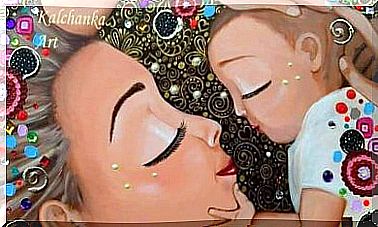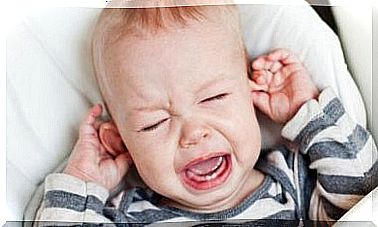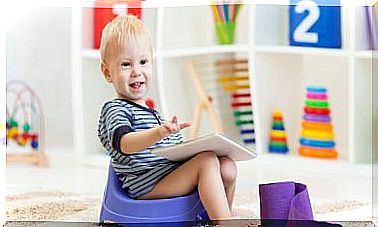The Hugging Reflex – Something Babies Are Born With
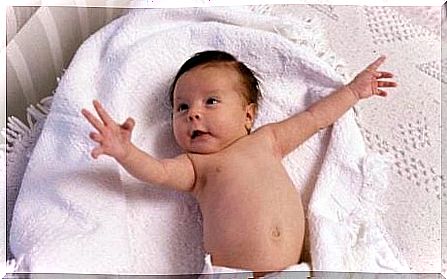
The so-called embrace reflex, or mororeflex as it is also called, is one of the first reflexes that humans exhibit.
Sometimes it worries us to see it or when we see subtle twitches, where the baby folds its arms and becomes stiff. The first thing you should know is that there is nothing wrong with the baby doing so. It is an involuntary reflex that disappears when the baby is around 4-5 months old.
In this article, we will explain a little more about the embrace reflex to sort out any questions you have.
Why is it called the mororeflex?
The embrace reflex is also called the morore reflex after the Austrian pediatrician who studied it in the early 20th century: Ernst Moro. It was defined as an instinctive reaction that appears when the child thinks it does not have a safe support point. It can also occur with sudden position changes.
They may also exhibit the embrace reflex when they hear an unexpected sound or realize that they are falling backwards. It is a crucial reflection of the development of the child’s central nervous system.
Interestingly, the embrace reflex is closely linked to fear and a sense of threat. It is considered to be the only fear that has not been learned.
How, when and why?
During the first months of life, the nervous system (among other systems) is constantly evolving. It is common to see a series of changes, such as crying or the embracing reflex. In other words, involuntary reflexes say that the baby is developing normally.
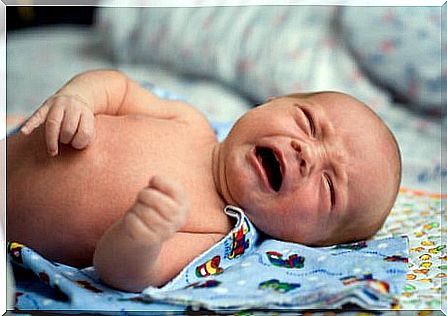
Those who study and monitor these reflexes are doctors, and above all pediatricians. They confirm whether or not the baby’s nervous system is developing properly.
To do this, they place the baby in a certain position to trick the brain into giving the answer they want to observe. To confirm or rule out the presence of the embrace reflex in babies, a simple test must be performed.
During a consultation, the pediatrician will place the baby on a soft pillow, take its head and then quickly simulate a fall. He will immediately regain control of the baby to prevent it from falling against the pillow.
They do this to make the baby think it has lost its balance; the hug reflex is then activated automatically. This is what pediatricians want to observe.
Warning! Never lift the baby’s body from the pillow, only the head slightly to simulate the feeling of a fall.
When faced with the feeling of a fall, the baby should jerk. The normal answer is for the baby to move his arms to the side with the palms facing up and the fingers stretched out.
When the fright disappears and the baby begins to relax, it will take its arms back to its body.
Remember that babies’ brains are still developing. Sometimes they can feel out of balance just by dreaming; other times, a sneeze is enough to trigger the embrace reflex. An unexpected sound or a tickle can also make them react in this way.
For parents, it can be scary to see the reflex for the first time because the baby becomes stiff and may get a different skin tone due to the increased blood flow. But there is no need to worry, because it falls within the normal parameters of the child’s development.
After experiencing these 5-6 seconds of fright, it is normal for the baby to start crying. It is very important that you make it feel safe and relaxed so that it does not feel scared for a long time.
It is also important to point out that there are babies who even in the cradle and when they sleep can experience the embrace reflex. They suddenly stretch out their arms, become stiff and begin to cry.
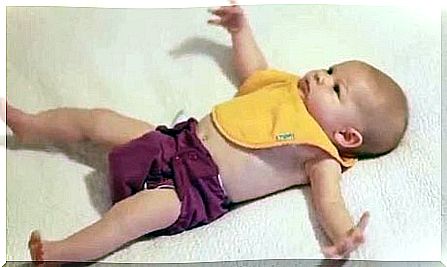
- A frightened expression in the baby’s eyes. The eyes are also wide open.
- The baby extends his arms with the palms up and the fingers spread. After a few seconds, the reflex stops, the body relaxes and the baby takes his arms back to his chest.
- Sudden crying.
What happens if the baby does not express this reflex?
If your pediatrician notices that the reflex is missing, it may be a disorder of the nervous system. Therefore, one can examine the child to look for the presence of hemiplegia, certain types of paralysis or even a fracture of the collarbone.
If the reflex persists after eight months of life, a neurological disorder may also be the cause.
When the baby experiences the embrace reflex, try to calm it down. Do not pick it up immediately. Just caress it a little to make it relax. By your side, it will feel protected and calm down.
If you think your child is constantly having the hug, you should talk to your pediatrician. But remember: the embrace reflex is a primary reflex that shows the normal development of a newborn’s central nervous system. At 4-5 months of age, it will disappear.


